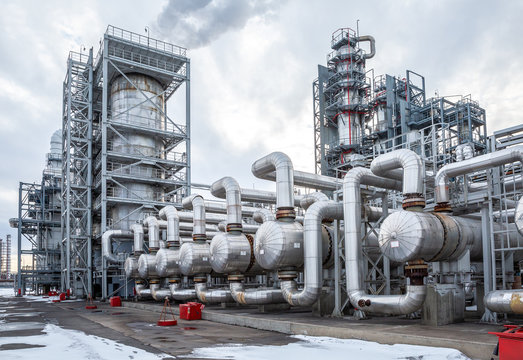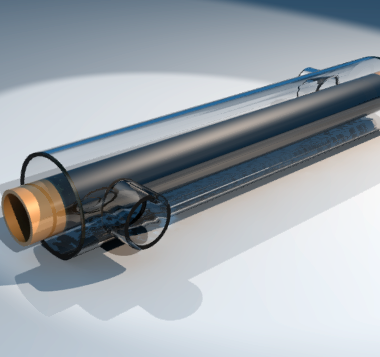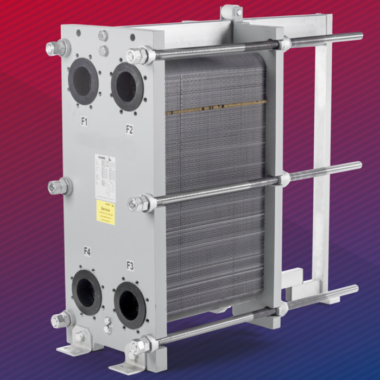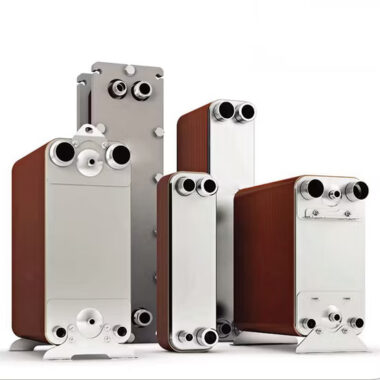Choose the Right Heat Exchanger for Industrial Cooling Systems
Introduction
Heat exchangers are essential components in industrial cooling systems, facilitating the transfer of heat between two fluids to regulate temperatures. In industries such as manufacturing, power generation, and chemical processing, the right heat exchanger ensures efficient operation, energy conservation, and system reliability. Choosing the correct heat exchanger involves understanding specific cooling requirements, fluid characteristics, and operational demands.
Understanding Heat Transfer in Industrial Cooling Systems
Industrial cooling systems are designed to remove excess heat from machinery, processes, or fluids. Heat exchangers play a critical role by transferring heat from one fluid (hot) to another (cooler). The efficiency of this process directly impacts system performance, making it essential to select a heat exchanger that can handle the required heat load and fluid properties.
Types of Heat Exchangers
The choice of heat exchanger type depends on the specific industrial application and the operating conditions:
- Shell-and-Tube Heat Exchangers: Ideal for high-pressure and high-temperature environments, common in chemical and power plants.Shell and Tube Heat Exchangers Application
- Plate Heat Exchangers: Compact and efficient, they are suitable for applications requiring high heat transfer rates in limited spaces.
- Air-Cooled Heat Exchangers: Perfect for locations with limited water availability or where water conservation is a priority.
- Finned-Tube Heat Exchangers: Frequently used in HVAC and refrigeration systems, offering enhanced heat transfer with minimal space requirements.
Material Selection
Choosing the right material is critical for heat exchanger performance and longevity:
- Stainless Steel: Known for its corrosion resistance and durability, making it suitable for various industries.
- Copper: Offers excellent thermal conductivity, commonly used in HVAC applications.
- Titanium: Highly resistant to corrosive fluids, ideal for industries dealing with aggressive chemicals or seawater cooling.
- Aluminum: Lightweight and cost-effective, often used in smaller systems with less corrosive environments.
Thermal Efficiency
The efficiency of heat transfer is a key factor in heat exchanger performance. Plate heat exchangers, for instance, are known for their high efficiency due to their large surface area. Shell-and-tube designs, with multiple passes, can also optimize heat transfer efficiency. Selecting a heat exchanger that maximizes efficiency helps reduce energy consumption and operational costs.
Custom Design Options
Not all industrial applications are suited to standard heat exchangers. In cases where unique operational demands, space limitations, or fluid characteristics are involved, custom-designed heat exchangers can provide tailored solutions. Custom designs allow for optimization of the heat exchanger’s performance by adjusting parameters like size, shape, material, and flow patterns to fit specific needs.
Modular vs. Integrated Systems
Depending on your industrial cooling needs, you may choose between modular and integrated heat exchanger systems. Modular heat exchangers offer flexibility, allowing you to scale the system up or down as needed, which is ideal for growing operations. Integrated systems, on the other hand, offer more compact solutions with fewer components, which can be beneficial for smaller installations.
Flow Rate Considerations
The flow rate of the fluid passing through the heat exchanger is a critical factor in its performance. A heat exchanger must be able to handle the required flow rates without causing excessive pressure drops or reducing heat transfer efficiency. Inadequate flow can lead to hotspots and inefficient cooling, while excessive flow can result in higher energy consumption and wear on the system.
Corrosion Resistance
Corrosion is a common challenge in industrial cooling systems, particularly in environments involving chemicals, saltwater, or harsh conditions. Selecting a heat exchanger made from corrosion-resistant materials like stainless steel, titanium, or special alloys can extend its lifespan and reduce the frequency of maintenance.
Operating Pressure and Temperature
The operating conditions of your cooling system, such as pressure and temperature, will influence the choice of heat exchanger. For example, shell-and-tube heat exchangers are preferred for high-pressure environments, while plate exchangers are suitable for moderate-pressure applications.
Life Cycle Cost Analysis
When choosing a heat exchanger, it’s important to consider not just the upfront cost but the total cost of ownership over its lifespan. A life cycle cost analysis helps you compare the initial purchase price with long-term expenses such as energy consumption, maintenance, repairs, and operational efficiency.
Selecting the right heat exchanger for industrial cooling systems requires careful consideration of factors such as heat load, fluid characteristics, material compatibility, and space constraints. By evaluating different heat exchanger types, focusing on energy efficiency, and ensuring compliance with industry standards, you can optimize your cooling system’s performance, reduce operational costs, and enhance system longevity.





